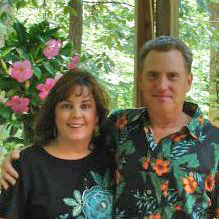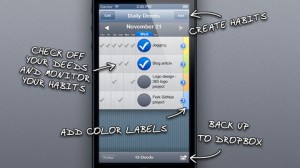 My name is Amy. In March of 2010, I was working as a home care nurse. While on my way to see a patient I was stopped at a red light when I was rear-ended by a driver going 45 mph. He told the police that he had been texting on his phone and did not notice that traffic had stopped. As a nurse, my first instinct was to get out of my car and check the other driver for injuries. While I was talking to him I realized that I had pain from my neck down to my feet. I knew that I had to call someone to notify them of the accident, but when I looked down at my cell phone my brain could not process what was in my hand and how to use it. I kept pressing buttons and couldn’t make the phone work. Finally, I thought to push the speed dial to contact my home health office. I spoke with the account manager and he told me to call the police. I had to admit to him that I didn’t know how. He instructed me to dial 9-1-1.
My name is Amy. In March of 2010, I was working as a home care nurse. While on my way to see a patient I was stopped at a red light when I was rear-ended by a driver going 45 mph. He told the police that he had been texting on his phone and did not notice that traffic had stopped. As a nurse, my first instinct was to get out of my car and check the other driver for injuries. While I was talking to him I realized that I had pain from my neck down to my feet. I knew that I had to call someone to notify them of the accident, but when I looked down at my cell phone my brain could not process what was in my hand and how to use it. I kept pressing buttons and couldn’t make the phone work. Finally, I thought to push the speed dial to contact my home health office. I spoke with the account manager and he told me to call the police. I had to admit to him that I didn’t know how. He instructed me to dial 9-1-1.
When the police arrived, the officer told me that I looked disoriented and asked me to sit down. We all thought that my disorientation was due to pain and shock from the accident. No one considered that this might be a brain injury, including me. When the EMT arrived they wanted me to go to the hospital. I tried to convince them that I needed to go see my home health patient first. All of the sudden it felt like someone pulled a curtain over my right side. I could not speak and lost all sensation and movement on my right side. I recognized the signs of a stroke. I was transported to the hospital and given an MRI. Yet, nothing showed up on the MRI. It wasn’t until later that I found out that studies have shown that 80% of people with TBI and/or stroke do not have anything show up on MRIs. I was discharged from the hospital two days later, with right side neglect and weakness. I also had expressive aphasia, which wasn’t diagnosed until two years post-injury.
When I returned home I was using a walker, I had difficulty with memory, and communication was difficult. I remember sitting down at the computer and trying to type. The words that showed up on the page were gibberish. I chalked it up to something wrong with the computer. With a brain injury and a stroke, when things don’t work right you don’t think it is something wrong with you. You truly believe that everything else in the world is somehow broken. Six months later a neurosurgeon spent an hour and a half with me, looked me in the eye and said, “You’ve had a stroke.†We found out that the traumatic brain injury that occurred during the initial impact caused a left side stroke. This confused many of my medical professionals because I had symptoms of both a TBI and a stroke.
Now that I had a diagnosis I went to physical therapy. I relearned how to walk, crawl, and strengthen my right side. I  progressed to walking with a cane. I then had surgery for a back injury that had been caused during the accident. After that, we learned that I did not know how to tie my own shoes. At first, we thought I couldn’t tie my shoes because I could not bend due to the back injury. In reality, I just couldn’t remember the steps to tying laces. I still can’t tie them to this day. But that hasn’t stopped me. I now use “Hickiesâ€, stretchy rubber bands that replace normal laces.
progressed to walking with a cane. I then had surgery for a back injury that had been caused during the accident. After that, we learned that I did not know how to tie my own shoes. At first, we thought I couldn’t tie my shoes because I could not bend due to the back injury. In reality, I just couldn’t remember the steps to tying laces. I still can’t tie them to this day. But that hasn’t stopped me. I now use “Hickiesâ€, stretchy rubber bands that replace normal laces.
Other issues became apparent. I struggled to initiate tasks, and then couldn’t remember what I had accomplished. When my kids returned from school and asked me what I had done during the day I couldn’t come up with a reply. I couldn’t remember if I had something in the oven, or to close the refrigerator door. Remembering to take medications was an issue. Even recalling how to do simple daily tasks was a challenge. When I woke up I had a hard time figuring out that I needed to shower, then get dressed, then eat breakfast. In fact, I couldn’t keep track of the sequence of taking a shower. Did I shampoo my hair or not? The other thing I had trouble with was remembering how to work the shower knobs. There were several times I burned myself before thinking to tell my husband that I was having trouble. We decided to use clear packing tape with Sharpie drawn arrows to indicate which way to turn the knobs.
In 2012 I began working with an assistive technology specialist, Sarah, from Brain Injury Services. Sarah spent a considerable amount of time talking with me to determine my needs. Part of the trouble with having a brain injury is that deficits are not always apparent to the individual, medical professionals, or family and friends. When asked what I had difficulties with, I could not readily identify what was difficult. It took many conversations to begin to gradually uncover where I needed help. As these issues were unearthed, we slowly started to generate ideas.
Some of the solutions we came up with were very low-tech. Sarah helped me develop a system so I could complete my shower tasks in the right sequence. We installed a fridge alert that would remind me to close the fridge door. We found a pillbox that helped me with organizing my medications.
 Other solutions required more advanced technologies. Sarah taught me to use my iPhone to set alarms to remind me to take my medications. We also set up other types of reminders. We synched my calendar to my husband’s account, since I often forgot to tell him when I set up appointments. When we discovered that I was having trouble finding icons on my phone, Sarah designed a special background to help me with my visual scanning. To make operating the phone easier Sarah taught me to use Siri commands. In the beginning, Sarah found me an app called Daily Deeds that helped me keep track of the everyday tasks I need to accomplish. After using that app for a while I now no longer need it to remember my routine tasks.
Other solutions required more advanced technologies. Sarah taught me to use my iPhone to set alarms to remind me to take my medications. We also set up other types of reminders. We synched my calendar to my husband’s account, since I often forgot to tell him when I set up appointments. When we discovered that I was having trouble finding icons on my phone, Sarah designed a special background to help me with my visual scanning. To make operating the phone easier Sarah taught me to use Siri commands. In the beginning, Sarah found me an app called Daily Deeds that helped me keep track of the everyday tasks I need to accomplish. After using that app for a while I now no longer need it to remember my routine tasks.
In January 2013, I ended up in the hospital with cardiac issues. I realized that I needed to manage my health more carefully. Sarah found me a blood pressure wrist monitor (made by iHealth) and weight scale (the Fitbit Aria) that synch wirelessly to my iDevices. With this technology I am able to better track my weight and blood pressure via a log and visual graphs. I share this information with my physicians to help them manage my cardiac disease. Because of my aphasia and memory issues, this helps me be a more credible and reliable reporter.
Due to my inability to drive, I have been dependent on others to take me places. I have also had issues in malls and finding my way around independently. Through Brain Injury Services I was assisted in setting up Metro Access, a transportation service which helps me get out of the house. Sarah helped me find and download apps on my iPhone that help with navigating around malls (FastMall and Point Inside). This has given me a sense of independence I have not had for three years.

